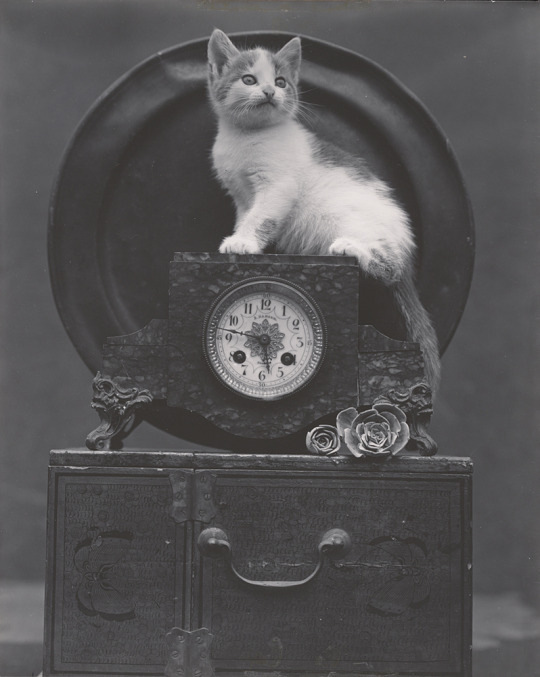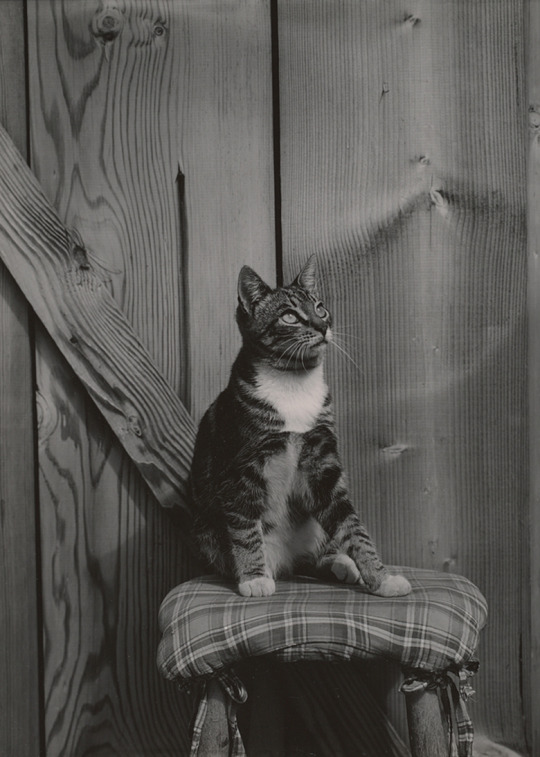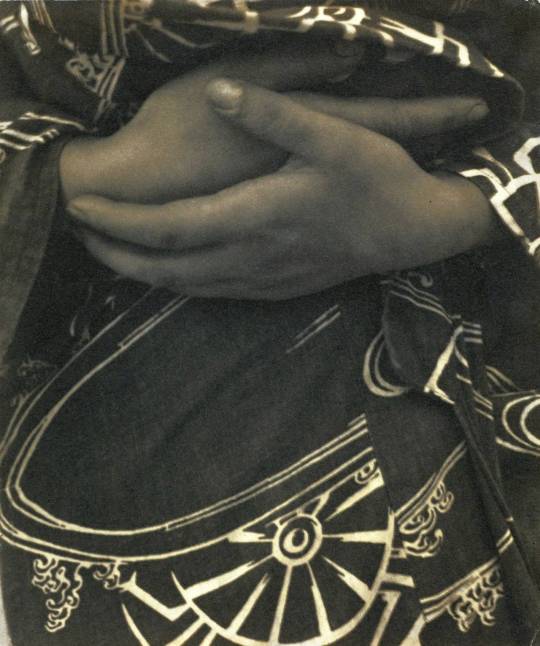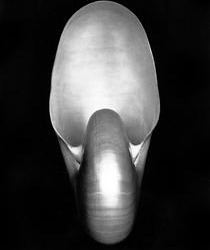#edward henry weston
Text
'morning, time for coffee

Edward H. Weston (1886-1958) ~ Hot Coffee, Mojave Desert, 1937. Center for Creative Photography | src AIC (artic)
285 notes
·
View notes
Text
( I know I know....I haven't read Mansfield Park)
(argh Lucy and ROBERT! Sorry brain was in stand by)
130 notes
·
View notes
Note
Could you do a ranking on the mothers-in-law of JA novels, from worst to best?
This is going to be fun!!! Here are the hero and heroine moms ranked as mother-in-laws... Okay, realized that two entire novels are devoid of MILs (Emma and Persuasion), so I'm throwing mother figures Mrs. Weston, Sophia Croft, and Lady Russell in too. Also, I started with best:
1. Mrs. Dashwood: fully prepared to love anyone her daughters love immediately. Judicious in her visiting, so friendly and kind she can break through any introverts shell, A+ MlL
2. Sophia Croft: ships her brother with happiness. Total badass who is never boring at a party. Welcoming and kind and will show Anne the captain-wife ropes (probably including some literal ropes...)
3. Mrs Morland: ready to welcome and forgive anyone kind to her daughter; sensible and practical. Her only demerit is insisting on the General's consent. I'm sure Henry loves going to their house for visits.
4. Mrs. Weston: loves Emma like a daughter and a best friend. Already has an amicable and equal relationship with Mr. Knightley. They will all go along charmingly. Only problem is her overly friendly husband who might invite the Eltons!
5. Lady Russell: Yes, she was prejudiced against Wentworth at first, but she admits she was wrong. She loves Anne, is the only half-sensible person at Kellynch, and she shares Anne's interests. Sure to be a welcome relief from Sir Walter and Elizabeth whenever the Wentworths visit.
6. Lady Bertram: she's... there. Nothing very positive in her behaviour but nothing negative either. Maybe gifted Fanny a pug.
7. Mrs. Price: Positives- lives very far away, will most likely leave you alone. Negatives- everything else.
8. Mrs. Bennet: Inspired the Bingleys to move hundreds of miles away, but she does feed you really well when you visit. Makes her daughter want to sink into the floor to get away.
9. Mrs. Ferrars: the only positive is that she may randomly give you £200. Cruel, falsely charming, probably still has Edward written out of the will even though Robert committed the real crime (marrying Lucy Steele).
Honorable Mention: Mrs. Musgrove has basically adopted Anne by the end of Persuasion and she is a stellar MIL, the whole family is so welcoming and loving. She is tied with Mrs. Morland.
Dishonorable Mention: Lady Catherine is the novel's stand-in for the orphan Mr. Darcy's family. We know that Elizabeth encouraged her husband to reconcile with his aunt, but why? Why do you want her around Elizabeth? Lady Catherine is tied with Mrs. Bennet.
Side Note, a lot of the heroes and heroines are motherless, Henry Tilney, Colonel Brandon, Captain Wentworth, Fitzwilliam Darcy, Charles Bingley, George Knightley, Emma Woodhouse, and Anne Elliot. So really not a lot of MILs to go around!
#austen's mother in laws#jane austen#question response#mrs. dashwood#sophia croft#mrs. morland#I think Mrs. Morland is the best mother#but Mrs. Dashwood is the best MIL
75 notes
·
View notes
Text
So, there's this famous quote (and source of many memes) from Northanger Abbey, where Henry Tilney says:
“and this is a very nice day, and we are taking a very nice walk, and you are two very nice young ladies. Oh! It is a very nice word indeed! It does for everything. Originally perhaps it was applied only to express neatness, propriety, delicacy, or refinement—people were nice in their dress, in their sentiments, or their choice. But now every commendation on every subject is comprised in that one word.” (chapter 14)
Indeed, Jane doesn't seem to like the word that much, at least in this novel: of the 14 times it is used, 3 happen before this exchange, 10 during it, and then one last time in chapter 29.
It appears
7 times in Pride and Prejudice (used mainly by Lydia, but also by Mrs Bennet, Mrs Gardiner and Lady Catherine);
12 in Sense and Sensibility (by sir John, Marianne, Edward, Mrs Palmer, and Mrs Jennings most of all);
17 in Emma (by Harriet, Mr Woodhouse, Emma, Miss Bates, Mrs Elton, and Mr Weston);
15 in Mansfield Park (by Mrs Grant, Mrs Norris, Mary, Tom, Mr Crawford, Maria, and Edmund);
12 in Persuasion (by Elizabeth, Wentworth, Admiral Croft, Mr Elliot, Mary
But of those, none are used by the narrator in NA; 2 in P&P; 3 in S&S; 5 in Emma; 4 in MP; and 6 in Persuasion (and I'm including all indirect speech). Very nice.
But you know what generic, vague descriptor our beloved Jane loved? fine.
NA: 33 times (18 from dialogue: used my Mrs Thorpe, Mr Allen, Mrs Allen, John Thorpe, Catherine, a miss Thorpe, Isabella, Tilney, and Mrs Morland.)
P&P: 40 times (21 in dialogue: used by Mrs Bennet, Charlotte, Lizzy, Darcy, Caroline, Mrs Gardiner, Mrs Reynolds, and Mr Bennet)
S&S: 29 times (17 in dialogue: used by Willoughby, Marianne, Edward most of all, Mrs Palmer, Anne Steele, and Mrs Jennings)
Emma: 48 times (33 in dialogue: used by Harriet, Mr Woodhouse, Mr Knightley, Emma, Miss Bates, Jane Fairfax, Mr Weston, Frank, Mrs Cole, Mrs Elton)
MP: 67 times (38 in dialogue: used by Mr Rushworth, Lady Bertram, Edmund, Mrs Norris, Fanny, Mrs Grant, Dr Grant, Mr Crawford, William, Mrs Price, Mr Price, and Mary)
Persuasion: 35 times (17 in dialogue: by Mrs Musgrove, Mrs Croft, Charles Musgrove, Sir Walter, Admiral Croft, Captain Wentworth, lady Dalrymple, Harriet Smith).
Not only is fine used much, much more than nice, but nice is most often used by silly or unrefined characters, whereas fine sees more representation of all sorts of characters, and it is used by the narrator specifically, much, much more, not only to describe weather, but to describe people, places, clothes, and so on and so forth.
So, dear Jane, I think we need to talk...
94 notes
·
View notes
Text
The Coronation Procession
This week I spent a few days in London, so I decided to walk the route that the newly coronated King Charles III and Queen Camilla will take, called the Coronation Procession! The Kings Procession, before the service is this route, just in reverse. I took pictures of the highlights of the route, it will definitely be something to look back on in the future!

Westminster Abbey
Founded in 960 and consecrated in 1065, Westminster Abbey, has seen the coronations of 39 English and British monarchs and 16 royal weddings and is the burial site for 18 English, Scottish and British monarchs.

Whitehall, Downing Street and Horse Guards Parade
Whitehall is recognised as the centre of the Government of the United Kingdom and is lined with numerous departments and ministries, including the Ministry of Defence, Horse Guards and the Cabinet Office. The Palace of Whitehall previously occupied the area and was the residence of Kings Henry VIII through to William III, before it was destroyed by fire in 1698; only the Banqueting House has survived. As well as government buildings, the street is known for its memorial statues and monuments, including the UK's primary war memorial, the Cenotaph and the Women of World War Two memorial.
Downing Street was built in the 1680s by Sir George Downing. For more than three hundred years, it has held the official residences of both the First Lord of the Treasury, the office now synonymous with that of the Prime Minister, and the Second Lord of the Treasury, the office held by the Chancellor of the Exchequer. The Prime Minister's official residence is 10 Downing Street, and the Chancellor's official residence is Number 11. The government's Chief Whip has an official residence at Number 12. In practice, these office-holders may live in different flats; the current Chief Whip actually lives at Number 9.
Horse Guards Parade is a large parade ground off Whitehall. It is the site of the annual ceremonies of Trooping the Colour, which commemorates the monarch's official birthday, and the Beating Retreat. Horse Guards Parade was formerly the site of the Palace of Whitehall's tiltyard, where tournaments (including jousting) were held in the time of Henry VIII. It was also the scene of annual celebrations of the birthday of Queen Elizabeth I. The procession will go past the entrance, not onto the parade ground.

Trafalgar Square and the Equestrian Statue of King Charles I
The square is named after the Battle of Trafalgar, a British naval victory in the Napoleonic Wars with France and Spain that took place on 21 October 1805 off the coast of Cape Trafalgar, southwest Spain. In the centre of the square is Nelson's Column built to commemorate Vice-Admiral Horatio Nelson's decisive victory at the Battle of Trafalgar over the combined French and Spanish navies, during which he lost his life. The monument was constructed between 1840 and 1843 to a design by William Railton. The statue of Nelson was carved from Craigleith sandstone by sculptor Edward Hodges Baily. The four bronze lions around its base, designed by Sir Edwin Landseer, were added in 1867.
The equestrian statue of Charles I is a work by the French sculptor Hubert Le Sueur, probably cast in 1633. It is considered the central point of London. Its location at Charing Cross is on the former site of the most elaborate of the Eleanor crosses erected by Edward I (one of 12, to commemorate his late wife, put in location throughout the route of her funeral procession stops back to London). The statue faces down Whitehall towards Charles I's place of execution at Banqueting House. It was commissioned by Charles's Lord High Treasurer Richard Weston for the garden of his country house in Roehampton, Surrey. Following the English Civil War the statue was sold to a metalsmith to be broken down, but he hid it until the Restoration. It was installed in its current, far more prominent location in the centre of London in 1675, and the elaborately carved plinth dates from that time.

Admiralty Arch
Admiralty Arch was commissioned by King Edward VII in memory of his mother, Queen Victoria, and designed by Aston Webb, who also designed the Victoria Memorial and the new façade of Buckingham Palace at the other end of the Mall. It once served as residence of the First Sea Lord and was used by the Admiralty.



The Mall, St James Palace and Clarence House
The Mall is the long red coloured road joining Admiralty Arch and Buckingham Palace. It has seen several huge celebrations such as Victory in Europe Day (8 May 1945), lots of state visits, parades and Jubilee celebrations. When the royal family stand on the balcony of Buckingham Palace, The Mall is packed from top to bottom of vast crowds. The surface of The Mall is coloured red to give the effect of a giant red carpet leading up to Buckingham Palace. This colour was obtained using synthetic iron oxide pigment.
St James's Palace is the most senior royal palace in London. It is the ceremonial meeting place of the Accession Council, the office of the Marshal of the Diplomatic Corps, as well as the London residence of Princess Anne, the Princess Royal and her husband, The Duke and Duchess of Edinburgh, Princess Beatrice and Princess Alexandra. The Proclamation Gallery (pictured above) is a part of St James's Palace, and it is used after the death of a reigning monarch. The Accession Council meets to declare the new monarch. Once the monarch has made a sacred oath to the council, the Garter King of Arms steps onto the Proclamation Gallery, which overlooks Friary Court to proclaim the new monarch.
Clarence House currently serves as the London residence of King Charles III and Queen Camilla. It has been Charles's residence since 2003. From 1953 until 2002 it was home to Queen Elizabeth The Queen Mother, and before her, it was the official home of her daughter, Princess Elizabeth, the future Queen Elizabeth II.

The Queen Victoria Memorial
The Queen Victoria monument and surrounding gardens were created between 1904 and 1924. The main statue was unveiled by King George V. As well as Victoria, there are statues representing courage, constancy, victory, charity, truth and motherhood. In summer the flower beds are filled with geraniums, spider plants, salvias and weeping figs. Scarlet geraniums are used to match the tunics of The Queen's Guard at Buckingham Palace. In winter time the beds are filled with about 50,000 yellow wallflowers and red tulips.

Buckingham Palace
Buckingham Palace has served as the official London residence of the UK’s sovereigns since 1837. Buckingham Palace has 775 rooms. These include 19 State rooms, 52 Royal and guest bedrooms, 188 staff bedrooms, 92 offices and 78 bathrooms. King George III bought Buckingham House in 1761 for his wife Queen Charlotte to use as a comfortable family home close to St James's Palace, where many court functions were held. Buckingham House became known as the Queen's House, and 14 of George III's 15 children were born there. Queen Victoria was the first sovereign to take up residence in July 1837 and in June 1838 she was the first British sovereign to leave from Buckingham Palace for a Coronation. Her marriage to Prince Albert in 1840 soon showed up the Palace's shortcomings. A serious problem for the newly married couple was the absence of any nurseries (for her nine children) and too few bedrooms for visitors. The only solution was to move the Marble Arch - it now stands at the north-east corner of Hyde Park - and build a fourth wing, thereby creating a quadrangle. The cost of the new wing was largely covered by the sale of George IV's Royal Pavilion at Brighton.
I then walked past the Royal Mews, where the Gold State Coach is being prepared for the Coronation. Then onto Hyde Park, then Kensington Gardens and finally Kensington Palace, which is the official London residence of the Prince and Princess of Wales and their children, the Duke and Duchess of Gloucester and the Duke of Kent. I then treated myself to a scrummy yet expensive piece of lemon cake from the Prada cafè in Harrods 🍰😋
information from wikipedia, royal parks and the royal family website
#king charles coronation#coronation procession#king’s procession#king charles iii#queen camilla#british royal family#on that day I did 33k steps 🫠
100 notes
·
View notes
Text

Altar of Chapel in St. Roch Cemetery, New Orleans
Edward Henry Weston (American, 1886 - 1958)
The Huntington
72 notes
·
View notes
Photo

Willard Van Dyke,
Ansel Adams,
Imogen Cunningham,
Sonya Noskowiak,
Edward Weston,
John Paul Edwards,
Henry Swift,
Group f/64 [Exhibition poster for An Exhibtion of Photographs by Group f/64, University of Missouri]
20 notes
·
View notes
Text

Edward H. Weston ~ Mary [kitten on clock], 1945 | src CCP~ University of Arizona
view more on wordPress

Edward H. Weston ~ Marco Polo [cat on stool], 1944 | src CCP~ Univ. of Arizona
#cat portrait#caturday#edward weston#edward h. weston#chat#cat#Katze#gato#gatto#animals#kitten#pets#portrait#Haustiere#marco polo#mary#weston cats#CCP#edward henry weston
182 notes
·
View notes
Text

Edward Henry Weston.
Hands Against Kimono (Tina Modotti), 1923
17 notes
·
View notes
Text









Albertosaurus is a genus of large tyrannosaurid theropod dinosaur that lived in northwestern North America during the early Maastrichtian age of the Late Cretaceous period some 72 to 68 million years ago. The first remains of what is now known as albertosaurus consisted of a partial skull was collected from an outcrop of the Horseshoe Canyon Formation alongside the Red Deer River in Alberta Canada, during a 1884 Geological Survey lead by Joseph Burr Tyrrell. In 1889, Tyrrell's colleague Thomas Chesmer Weston found an incomplete smaller skull associated with some skeletal material at a location nearby. The two skulls were assigned to the preexisting species Laelaps incrassatus by Edward Drinker Cope in 1892. The name albertosaurus wouldn’t be coined until 1905 when Henry Fairfield Osborn published his description of the iconic Tyrannosaurus Rex during which he redescriped the previously mentioned skulls assigning them to there own distinct genus named after the Canadian province established the very same year where the first remains were found. The type species is Albertosaurus sarcophagus hence the creatures full name meaning Flesh eating lizard of Alberta. Since the first discovery in 1884, fossils of more than 30 individuals have been recovered, some of which with intact skin and organs, which provide scientists with a more detailed knowledge of Albertosaurus anatomy than what is available for most other tyrannosaurids. The discovery of 26 individuals in one particular site helped with the research of gregarious behavior, ontogeny and population biology in dinosaurs. Reaching around 26 to 30ft (8-9m) in length and 3,800 to 5,600lbs (1,725 to 2,540kg) in weight, Albertosaurus was a fairly large bipedal predator, but smaller than Tarbosaurus and Tyrannosaurus rex. It sported a more gracile build akin to gorgosaurus sporting small arms, a heavy head and a long muscular tail. Albertosaurus had uniquely long and powerful legs which enabled the animals to comfortably walk at 8 to 13 mph (14- 21 kph). Additionally albertosaurus sported a set of short bony crests above the eyes that may have been brightly coloured in life and possibly used in courtship to attract mates.
Art can be found at the following links:
Albertosaurus Hunting Saurolophus: Frederic Wierum
https://www.artstation.com/artwork/KezreB
Albertosaurus vs Deinosuchus: Vlad Konstantinov
https://www.pinterest.ph/pin/albertosaurus-deinosuchus-by-vlad-konstantinov--567312884302409483/
Albertosaurus: Gabriel Ugueto
https://prehistoric-wiki.fandom.com/wiki/Albertosaurus
Dawn: KookaburraSurvivor
https://www.deviantart.com/kookaburrasurvivor/art/Dawn-732709698
Deinosuchus vs Albertosaurus: Raul Martin
https://www.raulmartin-paleoart.com/deinosuchus-albertosaurus
4 notes
·
View notes
Text
Possible Other Book Pairings Part 1: Pride & Prejudice
I’m kind of a strange JAFF writer because I have very few One True Pairings. The only pairing in Jane Austen I will not mess with is Henry Tilney and Catherine Morland because I love them too much. I’ll happily kill Elizabeth Bennet or make her and Darcy never meet. And I am always trying to get Fanny away from Edmund. I might write up some of these in the future, but here are my possible cross book pairings for P&P characters:
I wrote a Persuasion and P&P crossover (which you can currently read for free) and spoilers, the pairings were Louisa Musgrove & Bingley, Anne & Darcy, Elizabeth & Wentworth, Jane & Captain Benwick, and Caroline & Mr. Elliot (he likes her, it’s fine). I also prevented the Wickham/Lydia debacle and Mary married Mr. Collins.
Northanger Abbey: I think Darcy would be interested in Eleanor Tilney, but he’d probably see Catherine as a little sister. Bingley might be drawn in by Isabella Thorpe but he’d get over her pretty fast. Caroline divides her flirting time between Frederick Tilney and Darcy. I think Elizabeth would find Henry Tilney fun but I don’t know if they would actually work as a couple (they both like to talk too much). I think Jane might be better suited to Henry. Lydia would probably actually like John Thorpe and would definitely be BFFs with Isabella.
Emma: Emma and Darcy would probably like each other but that pairing would be THE WORST and WE CANNOT ALLOW IT TO HAPPEN. I am fairly certain that Darcy wouldn’t agree to move to Hartfield full time so we are safe. Emma and Darcy are basically the same person and I think they’d bring out the absolute worst in each other. Bingley would probably like Jane Fairfax, and I could see Frank Churchill being interested in Georgiana (aged up a little), though he’d flirt with Elizabeth. I think Elizabeth would be happy with John Knightley. Lydia and Kitty would be all gaga over the Hot Preacher Mr. Elton, but as he’s looking for money he’d be after the newly rich Miss King. Charlotte makes a play for Mr. Woodhouse. I could also see Jane being happy with Mr. Weston.
Sense and Sensibility: Darcy would probably love Elinor and hate Marianne. Bingley goes for Marianne’s looks, not sure if he would like her personality... but to be honest he might find it endearing. Lucy Steele would be ready to try for both Darcy and Bingley, probably focusing on the easier mark of Bingley. I think he would see through her and Darcy certainly would. Wickham would try for Sophia Grey. Elizabeth would probably love Willoughby and then be disgusted by him when she found out the truth. I could see Jane liking Colonel Brandon. I’m not sure if anyone pairs well with Edward… maybe Jane? Jane can’t marry everyone! Lydia and Kitty would be all over Willoughby but probably dismiss Colonel Brandon as too old. None of the men are rich enough for Caroline.
Mansfield Park: Bingley has trouble picking between the two beautiful Miss Bertrams but settles on Julia because she actually has an okay personality. Darcy is completely uninterested in them, but is drawn in by Mary Crawford. He clues in to her amorality WAY FASTER than Edmund and then falls for Fanny because she is awesome (she also activates Saviour Complexes and we know Darcy has one of those). Elizabeth would probably like Henry Crawford but if he tried the flirting-with-multiple-sisters thing she would shut him down (because she actually has good sister relationships). I could see Edmund maybe getting together with Jane. Caroline tries for Tom Bertram, since he’s the heir, and has very little success because she’s not a racehorse and that’s what he’s into right now. Lydia and Kitty fawn over William Price with all his exciting sea journeys. Henry Crawford probably wouldn’t actually marry.
(And yes, I leave out Mary Bennet a lot, I just don’t find her very interesting or likable...)
#jane austen#JAFF#jane austen fan fiction#pride and prejudice#northanger abbey#emma#mr. darcy#elizabeth bennet#sense and sensibility#mansfield park#persuasion#cross book pairings#I'm sorry Mary Bennet fans but I find her really pretentious and annoying#And very callous in the face of what happens to Lydia
27 notes
·
View notes
Text
Extra research
Edward Henry Weston was born on March 24, 1886, and died in Chicago on January 1, 1958. He was a 20th-century American photographer. He has been referred to as one of the masters of 20th-century photography and one of the most influential and innovative American photographers. Weston photographed a wide range of photography themes throughout the course of his 40-years career. It included landscapes, still lifes, nudity, portraits, and genre settings. It is mentioned that he established a quintessentially American, especially Californian, towards modern photography due to his focus on American West’s different locations and people. In 1937, Weston was the first photographer awarded a Guggenheim Fellowship. Over the course of the following two years, he used his 8 x 10 view camera to create approximately 1,400 negatives. Some of his most famous photographs were taken at Point Lobos, California, photographing the trees and rocks near where he lived for many years. He moved to California when he was 21. His early work consisted of the soft-focus pictorialism that was popular at that time. Then, he changed his style by focusing on producing photographs with a lot of fine detail. Some of his famous photographs were Nautilus, 1927, Shell, 1927, Dunes, Oceano, 1936, Civilian Defence, 1942, Garden Chair, Autumn, 1941 and Mushroom, 1937. He was diagnosed with Parkinson's illness diagnosis in 1947, resulting in him stopping his photography career.


Nautilus, 1927

Dunes, Oceano, 1936
2 notes
·
View notes
Photo

Photography - Edward Henry Weston (March 24, 1886 – January 1, 1958) was a 20th-century American photographer. He has been called "one of the most innovative and influential American photographers..." and "one of the masters of 20th century photography." Over the course of his 40-year career Weston photographed an increasingly expansive set of subjects, including landscapes, still-lifes, nudes, portraits, genre scenes and even whimsical parodies. It is said that he developed a "quintessentially American, and especially Californian, approach to modern photography" Vintage Edward Weston Mexico book available DM to purchase . . . Photograph @aesthetelabel #vintageseller #barbarahepworth #vintagecollection #igvintage #vintagestyle #vintagesellersofinstagram #midcenturymodern #midcenturystyle #curatedvintage #curatedhome #collected #collectedvintage #collectedhome #interiordesign #interiorstyling #interiordesigner #interiordecor #interiorinspiration #styling #stylists #homedecor #sustainableliving #sustainablehome #veganhome #vegan #veganinteriors #crueltyfree #homereno #aesthetelabel #homestyling https://www.instagram.com/p/CfhoS7NLBed/?igshid=NGJjMDIxMWI=
#vintageseller#barbarahepworth#vintagecollection#igvintage#vintagestyle#vintagesellersofinstagram#midcenturymodern#midcenturystyle#curatedvintage#curatedhome#collected#collectedvintage#collectedhome#interiordesign#interiorstyling#interiordesigner#interiordecor#interiorinspiration#styling#stylists#homedecor#sustainableliving#sustainablehome#veganhome#vegan#veganinteriors#crueltyfree#homereno#aesthetelabel#homestyling
10 notes
·
View notes
Photo

"Yvonne Sinnard Kneeling" by Edward Henry Weston, 1916.
2 notes
·
View notes

